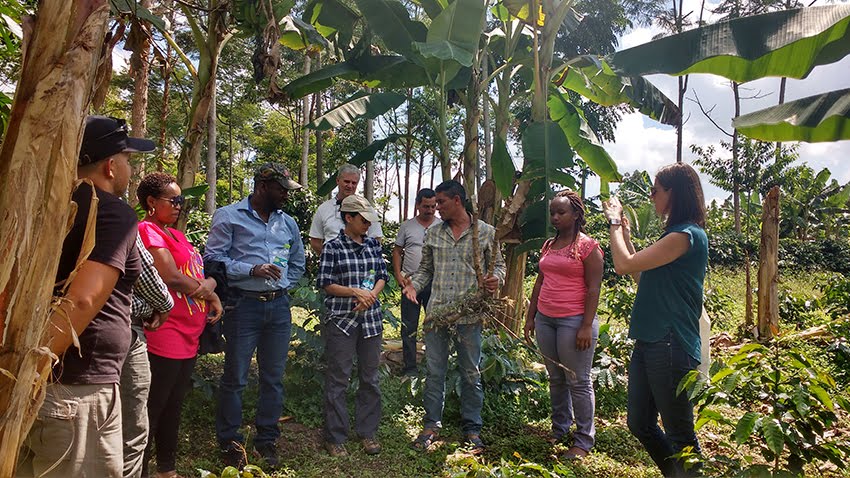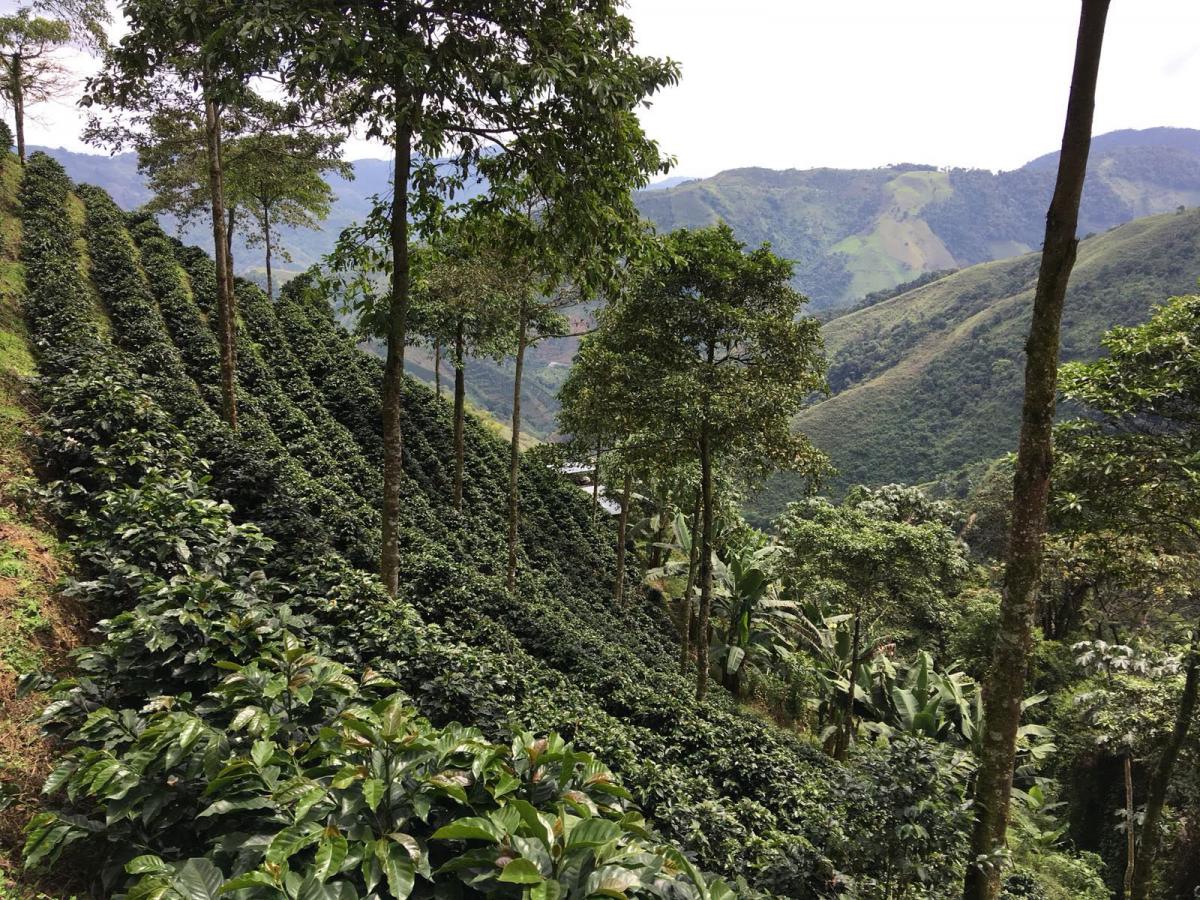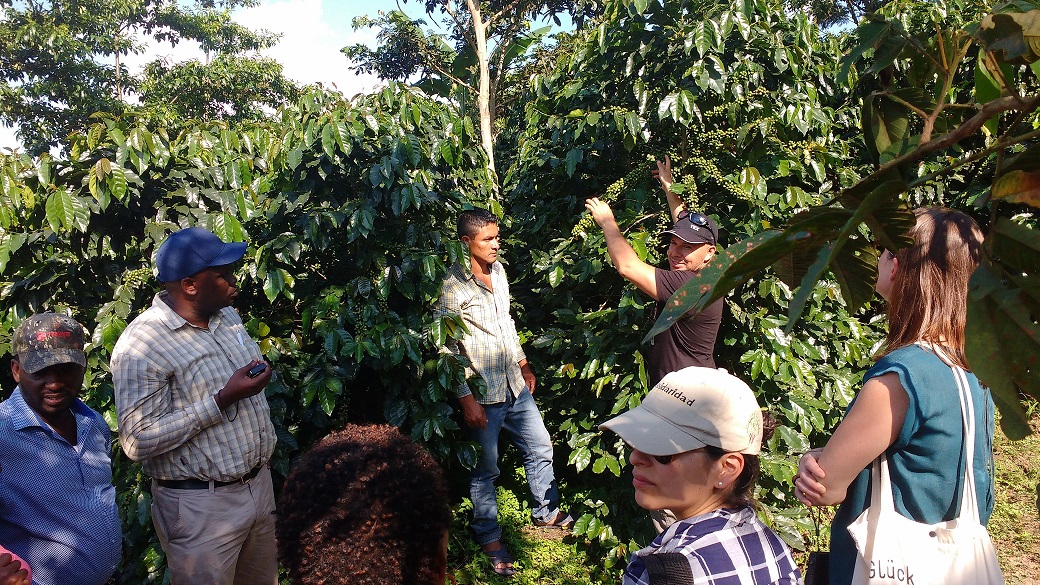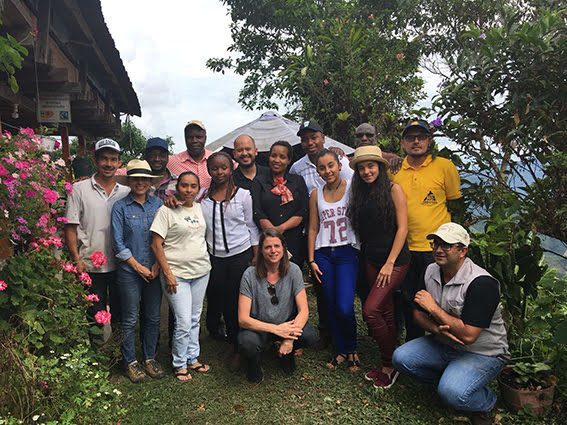
The African delegation visited farms participating in the "Coffee, Knowledge and Carbon for REDD +" programme, conducted by Solidaridad and financed by Norway, to reduce negative impacts of climate change and enhance environmental protection in coffee cultivation.
Between 2014 and 2016, the programme implemented an innovative technical assistance package to overcome obstacles posed by variations in climate, ensuring coffee production and favouring forest conservation through agroforestry practices.
Criteria for climate change interventions
The key to success of the climate-smart coffee package in South America was to establish a clear plan before starting the intervention: what was going to be implemented, who was going to implement it and how. The results translated into minimum requirements for successful replication in Africa and other coffee regions as summarized below:
1) Define a clear and practical technical package, adapted to the producers’ profile, their needs, and their realistic implementation capacity. In South America, the main topics to work on were soil management, wastewater management, waste from processing, planting density and which varieties to grow. The first condition for replicating this model in Africa would be to define the agronomic package according to the specific needs and producer profiles in Africa.
2) Develop sufficient technical capacity among farmers and with the right partners to implement this package in the field. When this model was implemented with cooperatives in Peru and with the National Federation of Coffee Growers in Colombia, Solidaridad’s role was to transfer the model and provide strategic and technical guidelines, while partner organizations were in charge of reaching producers and implementing the technical package. Whenever obstacles arose and the package needed to be adapted to a more specific context, organizations would turn to Solidaridad’s team for evidence-based guidance in climate-smart agriculture, specifically focused on coffee.
3) Establish an integrated model to reach producers. The main innovation in the South American situation was to combine technicians from partner companies, cooperatives and associations, with facilitators and promoters at the producer level, clearly establishing the specific responsibilities of each party in spreading good practices.
4) Introduce a carbon calculator for coffee. The other innovation in the South American model was to build a carbon tool adapted to coffee by making very specific changes to the Cool Farm Tool. This adapted tool provides useful information on how carbon is being captured. It also allows farmers to know how carbon emissions decrease as a result of reduced deforestation and, at the same time, the advantages for productivity and income.

Larger farms with fewer carbon emissions
As a result of the interventions above, Solidaridad managed to increase productivity by 21% among 7,300 producers in Colombia, Mexico and Peru. What stands out about this progress is, on the one hand, the scale reached, because until then climate-smart coffee pilots had only been tested with small groups of producers. On the other, what gives added significance to this result is that the increase in productivity was coupled with reducing carbon emissions by close to 28,000 tons and capturing nearly 100,000 tons of carbon.
Experts responsible for the implementation of sustainability programmes in Uganda and Kenya, Julius Ssemyalo and Catherine Maina, noted the attention to detail that the producers put in the management of their farms during their visit, as well as the capacity to process high-quality coffee cherries and carry out their own fertilization. In East Africa, most producers sell cherries (unprocessed coffee beans) because they lack low-cost eco-conscious knowledge, skills and basic equipment to process from cherry to parchment coffee on their farms. As a result, they tend to receive less income for their coffee.
In addition, both experts studied the use of digital technologies, interactive games for training, and the fact that training was focused on the practical skills of the producers since the use of presentations and other traditional training techniques is one of the main obstacles for transferring technology to businesses in Africa.

Adapting interventions to local needs
Solidaridad's International Programme Coordinator for coffee who organized the exchange visit, Andrea Olivar, explained:
Challenges related to productivity, climate change and the economic viability of improvements are present in both continents but at different levels. That’s why relevant solutions could be similar to those tested in South America, provided they are adapted to the African context, as the response capacity of producers in both regions differs due to the access to knowledge and available resources.
In East Africa, producers often organize themselves into associations or cooperatives, which in turn, are integrated into unions. They do this because each producer organization in Africa has many more members than in South America. While in South America associations amount to hundreds of members, in Africa they can include tens of thousands. This represents an extra challenge in terms of access to technical assistance in relation to South America since extension officers must cater to a much larger number of producers in Africa.
Moreover, coffee growers in Africa have, on average, a lower crop density per hectare. The cherry tends to be processed by the producer organization or by the trading house and then sold to the market. In South America, many farmers process the cherry in their farms and many smallholder cooperatives export directly, while in Africa, countries such as Ethiopia have an auction model that makes direct marketing more challenging.
Olivar noted:
Another challenge that Africa has in relation to South America is that producers receive a lower percentage of the FOB [shipping costs] price paid for coffee. In the organizations we visited in Peru, we saw that the producer receives up to 85% of the price paid, while in Africa many producers struggle to receive 50% of the FOB price paid. This example represents a critical element of efficiency that we must solve urgently in Africa.

In addition to working with producers, their organizations, field staff and other local partners, Solidaridad actively seeks support from other key stakeholders in the chain, such as traders, roasters and brands worldwide, to invest in the resilience of the farmers that they source from. This will remain a primary focus for the Solidaridad global coffee programme in 2018.
Learn more about Solidaridad programmes for sustainable coffee
